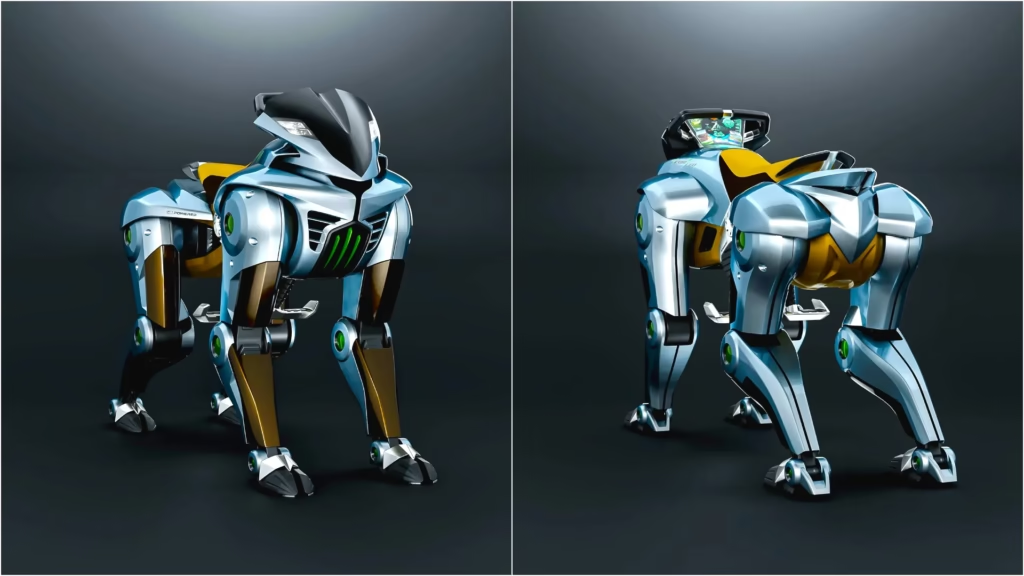Kawasaki has just surprised the tech world with the unveiling of Corleo, an off-road quadruped robot featuring a bold design and sustainable operation. Currently still in its conceptual stage, the project draws attention for combining advanced engineering, motorcycle-inspired design, and a future-focused mobility proposal.
But what exactly is Corleo, and why is it sparking so much curiosity?
What is Corleo?
Corleo is a four-legged robot designed to be ridden by a person — literally. Instead of handlebars or a steering wheel, the rider sits on it as if mounting a futuristic horse. Kawasaki’s idea was to create an off-road transportation option capable of traversing rough terrains easily, while using clean energy.
The robot runs on a 150cc hydrogen-powered engine, which generates energy to drive the mechanical legs.

This choice of hydrogen power reinforces the company’s commitment to sustainable solutions, following a growing trend in urban and rural mobility projects.
A design blending motorcycles and science fiction
Visually, Corleo is impressive. Its robust structure combines metallic and carbon elements with aerodynamic lines, very much in the style of Kawasaki’s motorcycles. The front resembles the “face” of a robotic animal, with embedded lights that serve both to illuminate and to enhance its futuristic look.
Beyond the visual impact, the design also has a practical function: providing balance and resilience across different types of terrain without sacrificing agility.
How does the rider control Corleo?
One of Corleo’s most innovative features is its control system. Forget buttons or levers — the robot responds to the rider’s body movements, almost like an extension of the human body. When the rider leans forward, Corleo moves forward. If they shift to the side, the robot adjusts its direction accordingly. It’s a natural form of interaction that makes the experience more immersive and intuitive.
Leia Também
At the front, there’s a display that projects information directly into the rider’s field of vision.
This heads-up display technology shows data like energy levels, terrain inclination, and weight distribution — all in real time.
Built for tough terrains
Corleo isn’t just good-looking and innovative — Kawasaki designed it to tackle trails, rugged landscapes, and unexpected obstacles. The model is equipped with high-grip rubber “hooves,” providing stability on both rocky surfaces and slippery terrain.
It can also jump over small obstacles, although Kawasaki hasn’t yet revealed technical details about its speed or performance.
When will Corleo be available?
For now, Corleo remains a conceptual prototype. Kawasaki has not yet released an official launch schedule but stated that the project is part of its vision for the future up to 2050. The model is still undergoing development and testing, and many adjustments are expected before any commercial version is announced.
Even so, the project already hints at what we can expect from robotics in the coming years: smart, sustainable vehicles that interact with their users more naturally.
Although still a concept, Corleo shows that Kawasaki is looking ahead and betting on technologies that could transform how we move — especially in challenging environments. By combining clean energy, artificial intelligence, and a striking design, Corleo isn’t just a robot: it’s a glimpse into what the future of mobility could be.


